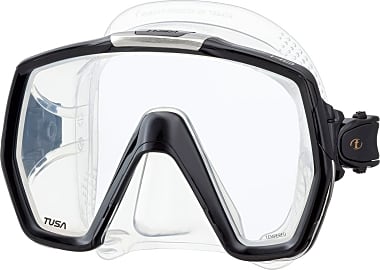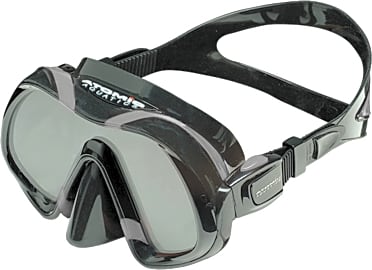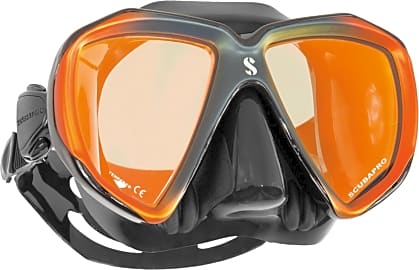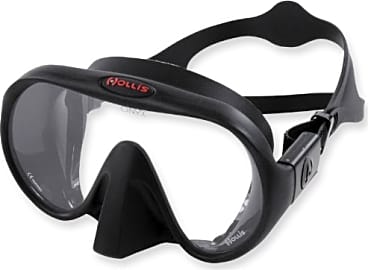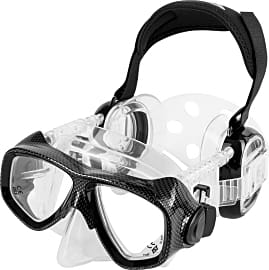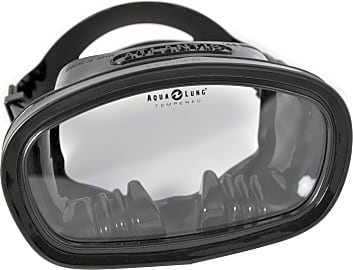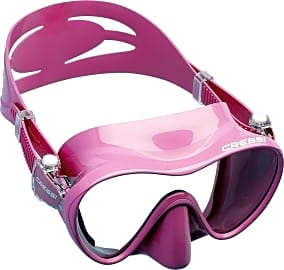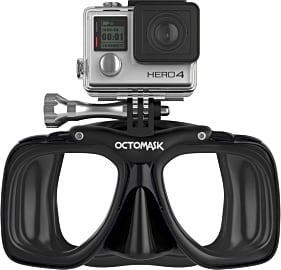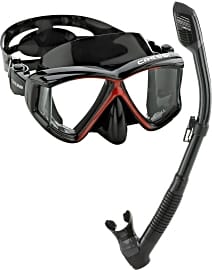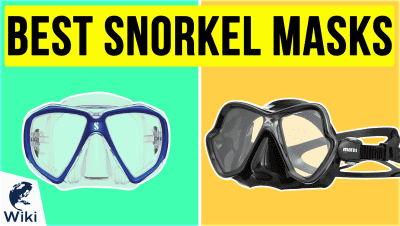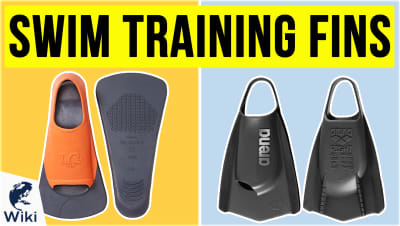The 10 Best Dive Masks

This wiki has been updated 39 times since it was first published in September of 2015. There's a world of magical creatures and fascinating colors awaiting exploration on your next underwater adventure. Wouldn't it be a shame if you missed any of it because of foggy lenses or uncomfortable head straps? These dive masks were selected for their quality, ease-of-use, and ergonomic features, and will ensure that your next scuba or snorkeling trip is a success. When users buy our independently chosen editorial recommendations, we may earn commissions to help fund the Wiki.
Editor's Notes
December 10, 2020:
Just like faces, dive makes come in many different shapes and sizes. While this is great because that means there will be one to fit every person, it can sometimes take some trial and error to get the best one for your features. To help with that, we have tried listing what kind of face shapes and features the recommendations on our list best accommodate when possible.
These days, low-volume masks are becoming more and more popular, so you'll see many of them represented here. Most people like them because they are much easier to clear than standard masks. They are also smaller, which means they are more convenient to travel with and can often be shoved into the pocket of a buoyance compensator, so anyone that packs their gear often to take to exotic dive sites should consider one. Many also find they offer a wider field of view since the lens sits closer to your face. The Tusa M1001 Freedom HD, Atomic Aquatics Venom, and ScubaPro Spectra are all low-volume models we recommend. Taking things a step further, you can get a frameless low-volume mask, such as the Apeks VX1, Hollis M1 Frameless and Cressi F1 Frameless if you really want to cut down on weight and bulk when traveling. On a frameless mask, the lenses are molded directly into the skirt.
One major issue some people have with low-volume masks is that they can feel somewhat claustrophobic because they have less air and the lens is much closer to your face. If you think this might bother you, you are better of choosing the Aqua Lung Atlantis or Cressi Panoramic Wide View, the latter of which comes with a snorkel and features side windows to enhance peripheral vision. The Aqua Lung Atlantis offers a single-lens design and is known for its impressive durability.
For those who have ear issues, there is no better option than the IST ME67 ProEar. It keeps your ears and nose connected by small tubes, which means there will be less issues with pressure building up. Plus, rather than having to squeeze your nose and blow to equalize, you simply exhale through your nose.
April 22, 2019:
When considering candidates for our line-up of best diving masks, we took "diving" to refer to a wide range of underwater activities, from snorkeling to free diving to, of course, scuba diving. That's why you'll find a number of different style masks on this list. Options like the Cressi F1 Frameless or the Phantom Aquatics Panoramic, for example, boast basic designs and budget-friendly price tags that make them perfect for casual, shallow-water outings (the Phantom even includes a J-style breather for snorkeling trips). On the other end of the spectrum, models like the Aqua Lung Atlantis and Hollis M1 Frameless, while representing two different takes on the professional dive mask, both offer the durability and optical quality necessary for more serious aquatic expeditions. Overall, we thought the Tusa M1001 Freedom HD best for most people, since it features a flexible silicon skirt that sits comfortably on most faces, lots of adjustment options for accommodating various head sizes, and one of the widest field-of-views out there, all at a fairly reasonable price.
Special Honors
Gull Ventia Best suited to free divers, the Gull Ventia is an extremely low-volume option that you'll have little trouble clearing quickly. It offers a wide field of view, has a very soft skirt that seals well on most facial shapes, and features pinch buckles that are simple to use with one hand. gull.kinugawa-net.com
A Brief History Of Scuba Diving
Over the next two years he made over 500 dives with the unit to depths of 200+ feet.
Inventions such as the diving bell in the 15th century allowed people to stay underwater for longer periods of time. It had surface air pumped into it to allow the user to breathe, but this cannot be considered scuba diving. Scuba is actually an acronym that stands for self-contained underwater breathing apparatus. This means that to be considered scuba diving, the air must be completely contained within the system.
The first scuba system was created by Sieur Freminet in 1772. It was a rebreathing device designed to recycle exhaled air into a barrel, so the diver could inhale it again. Unfortunately for Freminet, it was not understood at the time that humans use the oxygen in the air and exhale carbon dioxide. He died from lack of oxygen after just twenty minutes of using his invention.
In 1825, a more successful device was created by William James, an English inventor. He created a unit that contained a cylindrical iron belt that held 450 psi of air, a breather, and a copper helmet. It allowed for dives up to seven minutes.
Over the next 120 years, the history of diving is filled with many amazing triumphs and catastrophic failures. One such notable success was the 1865 underwater breathing apparatus called the Aerophore, patented by two Frenchmen, Auguste Denayrouse and Benoit Rouquayrol. It had a steel tank which held roughly 300 psi of air.
The diver was only delivered air when they inhaled, unlike previous systems which continuously fed air to the diver: a notable failure was the 1876 invention by English Henry Fluess. He created a closed-circuit oxygen rebreather. Like William James, he learned another valuable lesson of scuba diving too late. Pure oxygen is toxic to humans past a depth of 25 feet. He died while attempting a dive at a 30 foot depth.
The most significant figure in diving history must be Jacques Cousteau. He, along with engineer Emile Gagnan, created the first truly successful open-circuit, on-demand breathing apparatus in 1943. Over the next two years he made over 500 dives with the unit to depths of 200+ feet.
Picking The Right Dive Mask
One of the most vital aspects of a dive mask is its fit. If it does not fit right, nothing else matters as it will not only be uncomfortable, but will also leak water around the seams making it unusable. Before making any dives with a new dive mask, perform the following steps to ensure it fits correctly.
Next, just using your eyes, glance in each direction to check how wide the field of view is.
Start by placing the mask on your face and leave the strap off. Push it tight against your face and inhale through your nose. The mask should create a seal against your face with no leaks. This means you should not be able to continue inhaling air through your nose. If it does not seal, double check to make sure there is no hair in the way.
Next you want to check for a second seal, which is something all good quality dive masks should have. You can do this by having a friend perform a visual inspection of the dive mask while it is sealed against your face. It will be visible to your friend as it is the exterior seal. The second seal should lay completely flat against your face creating a backup airtight seal.
After ensuring your mask seals correctly, you should check it for comfort. Place the strap over you head and take a moment to turn your head in all directions, including up and down. It should not restrict your movement in any way. Next, just using your eyes, glance in each direction to check how wide the field of view is. A wider field of view will allow you to see more while diving.
Finally you will want to check how easy it is to perform an equalization while wearing the mask. If you usually dive with gloves, this should be performed with gloves. This will ensure you can effectively reach and pinch your nose to perform an equalization while diving. In some masks, the nose pocket may not be accessed easily enough.
Getting Fit By Scuba Diving
If you are looking to get into shape, but are tired of spending time at the gym, then scuba diving might be just what you need. Recent studies show that an average boat dive in warm, tropical waters burns anywhere from 300 to 400 calories an hour. This is equal to the amount of calories burned by walking briskly for the same amount of time.
For a larger calorie expenditure, dive in temperate waters, which can burn as much as 600 calories in an hour.
For a larger calorie expenditure, dive in temperate waters, which can burn as much as 600 calories in an hour. This equate to roughly one hour of jogging. For the average three dive boat trip in warm waters, you would be burning an extra 900 calories in just one day.
In addition to burning a large amount of calories, diving is a great way to tone the glutes and thighs, while strengthening the core and back. Maneuvering through water requires activating a large number of muscles. Your legs contain the largest muscles in your body.
The more developed those muscles are, the more calories you will burn even on resting days. A strong core and back is also a great way to reduce the chance of injury when lifting heavy items in your daily life.
In addition to the in-water benefits, lifting heavy dive tanks and taking the time to prepare and wash you equipment before and after a dive is a great way to burn a few more calories and strengthen the core. Diving is also a low impact exercise so there is virtually no chance of joint injuries, which are often caused by too much high impact exercises.


